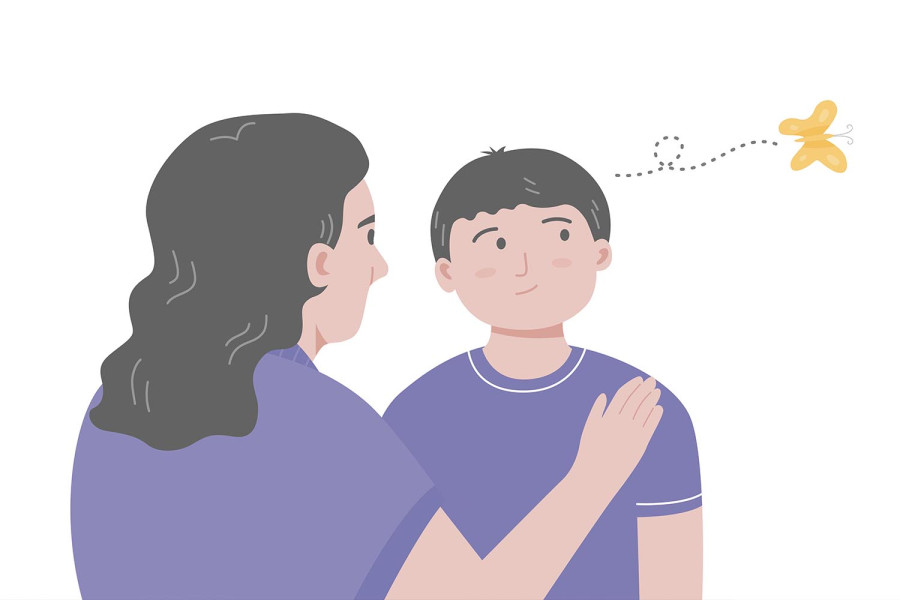Culture & Lifestyle
The great attention crisis
The modern mind is learning to live in fragments, making it, for example, almost impossible to watch a movie without distractions.
Sujina Manandhar
As I sat at a cafe near Kathmandu Durbar Square, waiting for my friend to arrive, my gaze fell upon a young student in her college uniform sitting at the next table. Her glasses reflected the soft glow of her phone in her hands. Between sips of milk tea, she switched from TikTok to Instagram, paused to answer a message, then checked the notifications from her recent Facebook post. Sitting next to her, her friend scrolled through a news headline, read the first paragraph, and clicked to another link before finishing. As I looked around, the cafe was filled with sounds of notifications, reels, laughter, and someone recording a story for their followers.
It was an everyday scene for a café, yet it reflected the story of a much larger transformation.
“The greatest of all arts is the art of attention,” wrote the painter Robert Henri. Today, that art feels endangered by glowing screens. The modern mind is learning to live in fragments, so much so that while watching a 10-minute video, we skip away parts of it, and sitting through an entire movie without being distracted by the phone feels next to impossible.
The algorithm prizes immediacy and punishes patience. The result is not just a shorter video but a subtle rewiring of our brains. Researchers suggest that social media platforms are using our attention as a currency, each competing for more and more of this currency for views, and each is more addictive.
The result? Our attention is being reshaped by the tools we use. A widely cited Microsoft study found a notable drop in the average human attention span over just a few years. According to the study, “The average human attention span in 2000 was 12 seconds, but by 2013 it was only 8 seconds (1 second shorter than a goldfish!).”
The science behind this is both elegant and ruthless. Social media platforms operate on what behavioural scientists call variable rewards. These unpredictable, intermittent bursts of novelty or validation trigger dopamine release. The uncertainty of reward fuels the compulsion to check again.
Over time, this recalibrates our baseline for engagement. A long essay, a phone-free walk, or even an unhurried conversation can feel strangely unrewarding because social media constantly releases dopamine in the brain.
The damage, however, is affecting us more than we realise. Gloria Mark’s research at the University of California, Irvine, shows that once distracted, the average worker takes more than twenty minutes to return to a task. Multiply that by how many times we check our phones during the day, and its impact on productivity becomes staggering.
Our collective impatience now shapes not just our media habits but our decision-making, our politics, and even our empathy.
What happens when attention is continuously fragmented?
Memory cannot be effectively consolidated because sustained focus is required for encoding information. Creativity diminishes because insight needs incubation, but quiet time has become intolerable.
But the story is not purely one of loss. Neuroscientist Amishi Jha and others have shown that attention can, in fact, be trained. Through mindfulness, contemplative practices, and deliberate “single-tasking,” the brain’s attentional networks can regain strength. In Jha’s research, even 12 minutes of daily focused attention practice improved working memory and emotional stability among participants. Attention is a skill, and like any skill, it can be rebuilt.
Repairing our attentional span can start with something as simple as setting boundaries with our phones and other devices. Intentionally and mindfully setting phone-free meals, no-scroll mornings, or curated feeds that privilege depth over novelty can restore the balance between digital overwhelm and necessary use.
Reclaiming attention does not mean rejecting the digital world. It means cultivating attentional literacy: recognising what deserves our time and what merely demands it.
It is to pause and choose before we click.
When we choose what to attend to, we decide who we are becoming. Across many studies, the concept of ‘Dopamine Detox’ and ‘Dopamine Fasting’ has been found effective in enhancing attention span. Simply put, it can include practices like:
Set aside one day a week (or even a few hours) without social media, streaming, or digital noise. Replace it with low-stimulation activities such as reading, journaling, cleaning, gardening, or walking.
Single-tasking is another way to reduce the amount of stimulation our brains receive. When you eat, just eat; when you talk, just listen. Each single task strengthens the brain’s attentional circuits and weakens the compulsion to multitask.
Practising boredom. Let yourself wait in line without your phone. Neuroscientists note that unfilled moments activate the default mode network, the brain’s system for reflection and creativity.
Reward slowness. Choose media that requires patience: a long podcast, an unhurried film, a physical book. Prioritise sleep and stillness. Attention is deeply tied to rest; even one extra hour of sleep improves focus, impulse control, and emotional regulation.
You could also build short micro-mindfulness sessions into daily routines, like a minute of conscious breathing before unlocking your phone. Remember, no matter how tightly technology pulls the chain, the key to its use remains firmly in your hand. You are the captain of the ship, not a passenger swept by the digital tide.




 7.12°C Kathmandu
7.12°C Kathmandu




%20(1).jpg&w=200&height=120)










